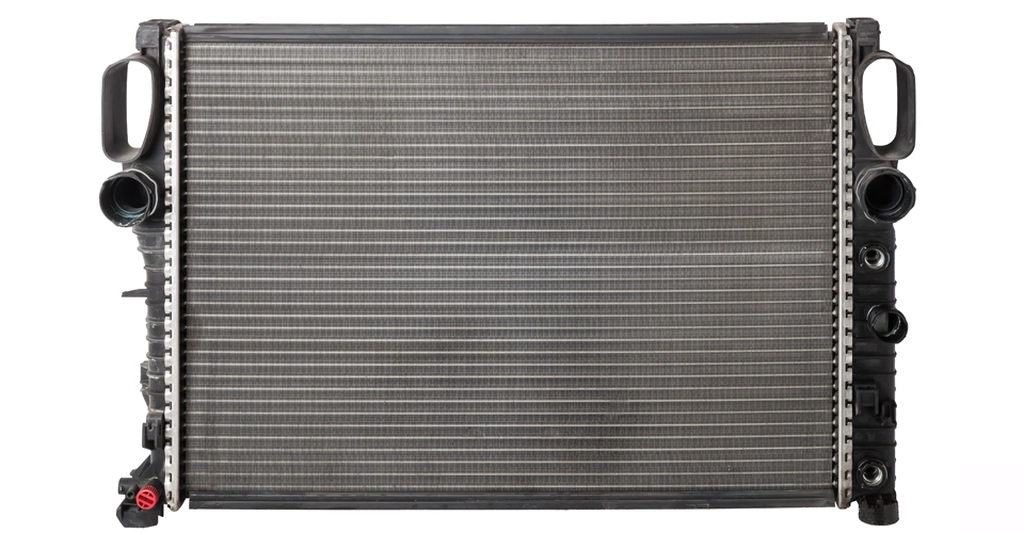Your car’s radiator is the heart of its cooling system a vital part that helps regulate engine temperature and prevent overheating. But like any mechanical component, radiators can fail or get clogged over time, leading to serious performance issues and potential engine damage.
Whether you drive a compact sedan or a high-performance SUV, recognising the early symptoms of a radiator issue can save you from costly repairs down the road. In this guide, we’ll walk you through eight common signs of a bad or clogged radiator, how it affects your car, and what you can do about it.
Why Is the Radiator So Important?
The radiator’s main job is to keep your engine cool. It circulates coolant through the engine, where it absorbs heat, and then sends it back to the radiator where it’s cooled by air passing through the front grille. This cycle repeats constantly while the engine runs.
If the radiator gets clogged, damaged, or starts leaking, that heat can’t be properly managed and that’s when problems begin.
8 Common Signs of a Bad or Clogged Radiator
1. Engine Overheating
This is the most obvious red flag. A clogged or faulty radiator can’t cool the engine efficiently, causing temperatures to rise. You might notice the temperature gauge creeping into the red, steam coming from under the bonnet, or even a warning light on the dashboard. Driving with an overheating engine can lead to head gasket failure, warped engine components, or complete engine breakdown so don’t ignore it.
2. High Engine Temperature Readings
Even if the engine doesn’t fully overheat, consistent high-temperature readings on your dashboard gauge are a major warning. If the radiator can’t circulate coolant effectively due to internal blockage or external debris, heat won’t dissipate as it should. This constant heat build-up increases wear on the engine and could lead to breakdowns if not addressed.
3. Coolant Leaks
A blocked or failing radiator often leads to excessive pressure in the cooling system, causing coolant to leak from weak spots like hose connections, seams, or even the radiator itself. You may spot green, orange, or pink fluid pooling under your car or smell a sweet, chemical odour from the engine bay. Low coolant levels further increase the risk of overheating.
4. Discoloured or Sludgy Coolant
Healthy coolant is brightly coloured and flows freely. But when the radiator is corroding from the inside or mixing with oil or rust particles, it can turn brown, rusty, or sludgy. This sludge thickens the coolant and restricts flow, leading to poor heat dissipation. If your coolant looks dirty or oily, it’s time for a flush and possibly a radiator replacement.
5. Damaged Radiator Fins
The radiator’s thin metal fins are essential for airflow. But road debris, stones, or even minor collisions can bend or break these fins. If airflow is blocked, the radiator won’t cool the fluid efficiently, causing temperature problems. A visual inspection through the front grille can reveal bent fins or signs of physical damage.
6. Cabin Heater Not Working Properly
Strangely enough, your car’s heater relies on the radiator. It uses hot coolant to warm air before blowing it into the cabin. If the radiator is clogged or there’s a coolant leak, not enough hot coolant reaches the heater core. The result? Cold air from the vents even when your heater is on full blast.
7. Low Coolant Levels (Even After Refilling)
If you constantly need to top up your coolant, something is wrong. Leaks, cracks, or internal blockages in the radiator could be causing coolant loss. A system that can’t hold coolant is one that can’t regulate temperature which leads right back to engine overheating.
8. Radiator Cap or Pressure Issues
The radiator cap is more than just a lid it maintains the right pressure in the cooling system. If it fails or is damaged, pressure escapes and coolant can boil or overflow. Similarly, an over-pressured system due to clogging can blow hoses or cause the radiator to leak. If you hear hissing or see bubbles in the coolant reservoir, pressure issues could be the cause.
Can You Still Drive with a Bad Radiator?
You really shouldn’t. Continuing to drive with a damaged or clogged radiator puts your engine at risk. What starts as a minor clog could lead to full engine failure, warped cylinder heads, or cracked engine blocks. If you notice any symptoms from the list above, it’s best to get your car inspected immediately.
What’s the Average Lifespan of a Radiator?
A well-maintained radiator can last 8 to 10 years, sometimes longer. However, environmental factors (like salty coastal air), low-quality coolant, or infrequent maintenance can shorten its lifespan. Regular coolant flushes and inspections can dramatically extend radiator life.
Final Thoughts
A clogged or faulty radiator isn’t just an inconvenience it’s a serious risk to your car’s engine. Regular checks, clean coolant, and quick action when symptoms appear can save you from expensive damage later on. Don’t wait until steam is billowing from your bonnet.
If you’re in the UAE and suspect a radiator issue, MotorHub can help. Our mobile diagnostics and certified workshops can inspect, diagnose, and repair your radiator to keep your car running cool and trouble-free.
Book your radiator inspection with MotorHub today and avoid costly engine damage tomorrow.



